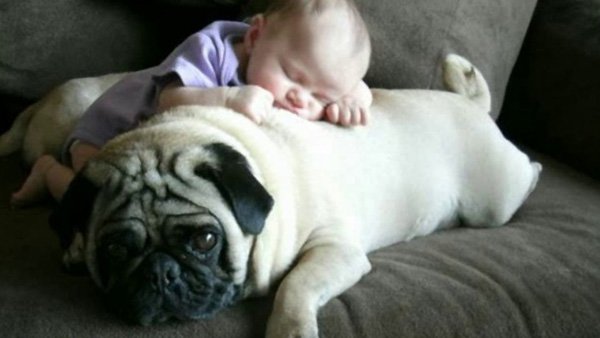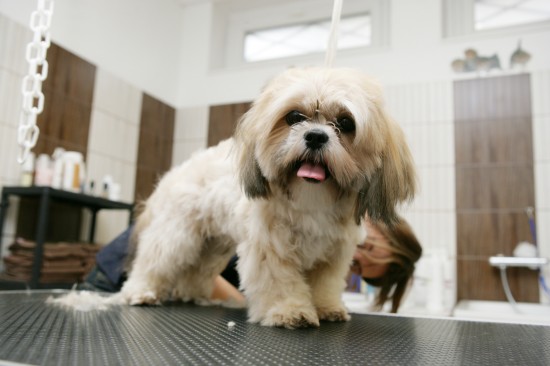
Crating your dog when you leave him alone might seem easier, but
it may not be the best approach to keep him out of trouble. And
it may even cause your dog to experience more separation
anxiety. Crating was developed as a method of housebreaking. If
you will spend a modest amount of time training a puppy, they
will have many years of satisfying companionship. Caging is fine
if used for only a few hours at a time when you can’t be there
to supervise. Caging should never become a permanent way of
life. Excessive caging can lead to problems. Some of the worst
behavior problems seen in dogs were dogs that were crated for
long periods of time. Some dogs cannot tolerate any time in a
cage at all; they panic and fight to get to get out. It is also
true that some dogs really do like their cages and find them a
cozy refuge, a den to retire in away from the hustle and bustle
of everything else. Caging or crating is an acceptable method of
housebreaking if used in moderation.
Dogs who chew wildly and scratch walls are not being spiteful.
Dogs don’t have the intelligence to be spiteful. Shih Tzu
especially want nothing more than to spend time with “people.”
They are very sociable and are always quite content to be slab
dab in the middle of everything “their people” are doing,
regardless of what it is. When you are away they sometimes can
become anxious and some might even become frantic. So what can
you do?
They need help becoming more comfortable when they are alone and
they need to learn that you will return after you go out. If
possible, devote several consecutive days addressing the problem
and plan on more time to reinforce any progress you make. Give
your dog attention, but if he decides to walk off and curl up in
a corner to sleep, let him be, if he does not follow you when
you leave a room, don’t encourage him to do so if it is not
necessary. You want to teach him to be okay by himself even if
it is only in another room.
Start conditioning the dog for your absences. You might exercise
the dog so he will be ready for a nap and make sure he has
relieved himself. Then, leave him alone in his space. Don’t make
a big deal about it because you don’t want him to think that
your leaving him is a big deal. Leave the dog alone for a minute
or two while you go elsewhere in the house or into the yard. Do
this several times through the first day of conditioning
training. If he remains calm, increase the time. Work up to
about 10 minutes. If all goes well, do the same the next day.
This time, leave and go somewhere else. Take a walk up the
street or take a short ride in the car for 5 minutes, then
return. When you leave, try to leave him joyously and when you
return, try to return with a joyous greeting, so that he
associates you leaving and you returning on the same note,
something not so bad, but something joyous and that you always
return. Work up to 15 minutes, then slowly work up to a couple
of hours. Leave and return quietly. You want your dog to learn
that leaving and returning is nothing to get tore up about. If
you return and the puppy has been destructive do not scold him.
he won’t know what you are scolding him about and this will only
make things worse. His anxiety will increase. If you see
destructive behavior, take a step backward, decrease the time
you are away and build back up again. If you do not have the
time to devote to this conditioning training, then you may have
to find a dog sitter to leave your dog with if he is one that
becomes anxious or destructive when you are away, at least until
you have time to devote to training.
These are just a few tips to help you deal with a shih tzu who
truly might have separation anxiety or to prevent separation
anxiety from becoming a problem. I hope this helps.
 Five Famous Cats
Five Famous Cats
Five Famous Cats
Five Famous Cats
 4 Endangered British Native Dog Breeds
4 Endangered Brit
4 Endangered British Native Dog Breeds
4 Endangered Brit
 Ten Great Ways For Pet Lovers To Help Animals This Christmas
Ten Great Ways Fo
Ten Great Ways For Pet Lovers To Help Animals This Christmas
Ten Great Ways Fo
 Buy Nutritional Feed For Effective Treatment Of Ulcers In Horses
Buy Nutritional Feed For Effective Treatment Of Ulcers In
Buy Nutritional Feed For Effective Treatment Of Ulcers In Horses
Buy Nutritional Feed For Effective Treatment Of Ulcers In
 Dealing With Matted Fur In Dogs
Dealing With Matt
Dealing With Matted Fur In Dogs
Dealing With Matt
Copyright © 2005-2016 Pet Information All Rights Reserved
Contact us: www162date@outlook.com